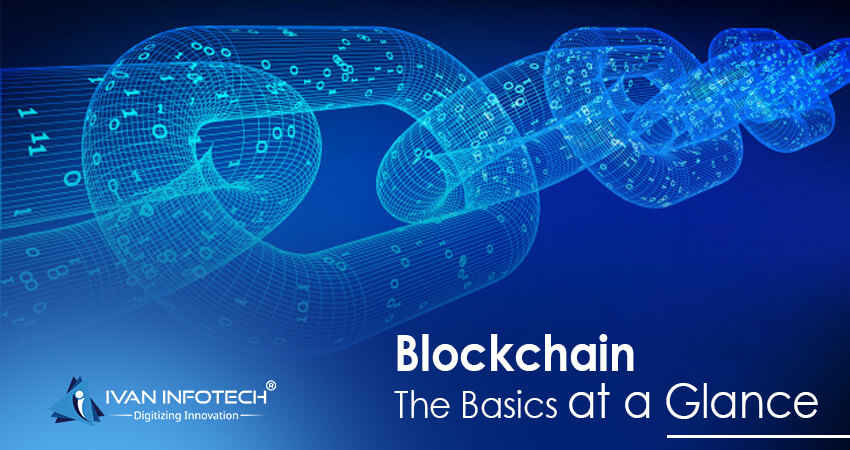
Blockchain – The Basics at a Glance
Since Blockchain is introduced in 2008, it has been going around the market as a successful thing. Initially, it was invented for the purpose of the open ledger for cryptocurrency Bitcoin, but with more wings added to it, it has been used for greater purposes. Despite being a decade-old technology, a lot of people are not well acquainted about it. The search engine gets millions of search regarding what is Blockchain. Let’s focus on the basics of Blockchain from its very scratch in this article. P.S. even if you already know about it, a recapitulation never hurts!
Story of Origination
Going through the history of blockchain, we have found out that before the evolution, there was a primitive form of Blockchain called Merkle Tree (1979) which was basically a data structure to verify and handle different data between computers. The functionality used to lie in the validation of data where data alteration during the transfer was ensured. False data rejection and maintenance of authentic data were what it was made for.
1991 was the year when Merkle Tree was used for creating blocks which were securely connected with one to another series for the data record. Whenever a new block of data was added to the chain, it automatically connected the previous block and formed a chain.
The third level of Blockchain was developed in 2008 which is the current blockchain available. It is a secured database where data is stored as blocks connecting each other like a chain. Each of the blocks of a chain contains a history of data transaction. By using the network built between several computers it collects data regarding timestamp verifies the exchange.
Blockchain and Its Functionality
Defining Blockchain it can be said that it is a digitized database with information that can be shared with a public decentralised network to be served as a public ledger for the transactions of cryptocurrency. The chain is growing continuously with cryptographic data called blocks. It enables the participants to keep a track of digital currency transaction without any restriction.
It is a secured list of data where a single block comprises of the transaction details. Once the transaction is completed, the block gets connected to the chain and becomes a permanent part of the database. Every block secures all detail of a new transaction. These are all unique and secured.
Blockchain and Bitcoin
Blockchain is the base of Bitcoin. The decentralisation of Bitcoin was possible because of Blockchain because of no control of the central authority the transactions with cryptocurrency. Blockchain eliminates all third party intervene, so, the payment transaction between two parties with Bitcoin goes directly to them without any third party involvement.
For this secured functionality, Blockchain is not only used in the banking sectors but also in other fields like music, IoT, stock market and many more. There is a recommendation of using Blockchain in medical records, voting system, automobile registration and others.
Unique Factors of Blockchain
- The DLT or Distributed Ledger Technology used in Blockchain is cheaper than accounting methods which are majorly used.
- Elimination of many repeated steps makes it faster and almost error-free.
- It is of great use for international transactions.
Area of Consideration
- A sound knowledge of technology is a must-have for blockchain.
- There are many organizations which are not completely sure about the security of Blockchain.
- It is a public ledger and all companies may not be comfortable with this.
What is your thought about Blockchain? Share with us.
Subscribe to the Newsletter
Don’t lag behind in the ever-evolving age. Stay updated with all tech news and trends. We will not fill your inbox with spam mails. You will only receive updates about the cream contents.
Want Assistance with Software Development?
Anything you need in terms of software, you can count on us. With knowledge, skills and years of experience, we create tailor-made, integrated development solutions with high-end technologies.























Categories
Ai software solution
API Development Services
app development
Application Maintenance
AR And VR Software Development
AR Software Development
Artificial Intelligence
Asset Tracking
Automated system
Big Data
Block Chain Development
Blockchain Development Solution
Blog
cloud computing solutions
CMS Development Services
Construction Software Solution
CRM
custom web application
Digital Asset Management
Digital Marketing
Digital Services
Ecommerce Industry Solutions
ecommerce solution provider
Education Software Development
education software development Solution
Education Software Solution
ERP Software Development
Event Ticketing Software Solution
Finance Software Solution
Food and beverage software
Graphic Design
Healthcare software solution
hospitality software development solutions
hotel software solution
IMS
IOT
IT application development
IT Consultancy
IT services
IT solutions
Java
Java App Development
Lead Generation Services
Legal Software Development
mobile app design
opensource software development
pos software development Solution
Quality Assurance
Real estate software
Restaurant Software Solution
Retail IT Solutions
Retail Management Software
software development
Software Security
Software Testing
Sports Software Development
Supply Chain Software Solution
Transportation Software Development
Travel & Hospitality
UI and UX design
Uncategorized
Web Design
Web development service
Web Programming